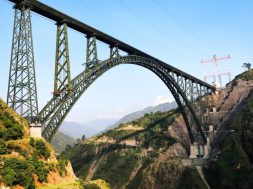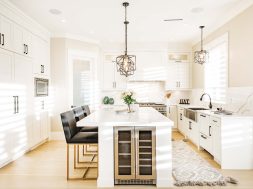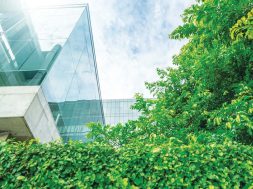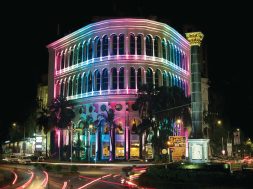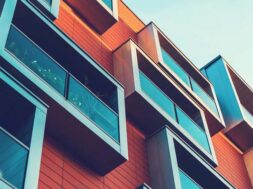Integration between waterproofing and insulation system offers sustainable roofing
Sanjay Bahadur, Global CEO of Construction Chemicals Division at Pidilite Industries writes waterproofing and insulation material for roof should be selected based on the life cycle analysis, not just the initial investment
Sanjay Bahadur, Global CEO, Construction Chemicals Division, Pidilite Industries Ltd.
The rapidly growing energy use has already raised concerns over supply difficulties, exhaustion of energy resources and heavy environmental impacts (ozone layer depletion, global warming, climate change etc.). Delhi, this winter, broke 44 years record as it witnessed its maximum temperature below 10 C. Mumbai, this year, recorded the 3rd lowest March temperature as well as 3rd highest March temperature in a decade and the hottest temperature in the country. Growth in population, increasing demand for building services and comfort levels, together with the rise in time spent inside buildings, assure the upward trend in energy demand and will continue in the future. Ever-changing urban lifestyles and the expectation of higher comfort levels contribute to a rising energy demand as people become more and more reliant on air conditioners. The contribution from buildings toward total energy demand and CO2 emission is nearly 40 per cent.
India offers a huge opportunity to avoid the carbon lock-in associated with new buildings as 66 per cent of the buildings, expected to exist in India in 2030, are yet to be constructed. With the fast depleting fossil fuels reserves and ever-increasing electricity prices, it is inevitable to adopt Energy Conservation Measures (ECMs). If ECMs are included in the design stage, today’s modern, contemporary buildings can avoid adverse impact on the environment and economy by saving 25-50 per cent of its energy demand.
As per the study conducted by McKinsey’s on global cost curve for greenhouse gas abatement measures beyond “business as usual”, almost a quarter of possible emission can be reduced from measure such as better insulation in buildings which carry no net life cycle cost. India is also witnessing this trend and building envelope insulation is gradually becoming one of the key practices to minimise heat gain in the building and save on increasing energy cost. Apart from the considerable savings in the operational cost, exterior thermal insulation improves the indoor comfort factor, thereby providing a healthier environment and enhancing the life of the building.
The traditional, conventional systems of waterproofing and thermal insulation in India worked well for ages to suit to the Indian construction and economics. However, the use of conventional systems such as brick bat coba, tar felt, mud phuska, etc. are not sustainable and require frequent maintenance and also do not suit the complicated site dynamics of today’s construction neither they offer the required insulation values to comply to the Energy Conservation Building Code (ECBC), an energy code launched by the Bureau of Energy Efficiency in 2007. Today it is necessary — socially, environmentally and economically — to design and constructed buildings adapted to green measures. Indian Green Building Council, since 2001, has been creating awareness toward the benefit of green design through LEED (Leadership in Energy and Environmental Design) rating system. The Energy Research Institute (TERI) is also creating awareness towards green design through GRIHA (Green Rating for Integrated Habitat Assessment) rating system.
As per ECBC, India is divided into five climatic zones and depending upon the building use (either day time or 24-hour operations), thermal performance values have been pre-defined. Efficacy of insulation is measured by thermal resistance (R Value). For instance, to achieve a R value of 2.1 sq. m k/W (for day time operation building in Mumbai which falls under warm and humid climate), one can use a brick bat coba (BBC) of approx 1,900 mm thick or about 80-mm thick expanded polystyrene or 40-mm thick Dr. Fixit Foamshield from Pidilite Industries. For the same case, BBC would weigh about 3 tonnes per square metres Dr. Fixit Foamshield would weight only 2 kg/sq. m.
Waterproofing and insulation material for roof should be selected based on the life cycle analysis, not just the initial investment. An important aspect toward a sustainable performance of such system is the integration between waterproofing and insulation system. Moisture management in envelope assemblies is a very critical design consideration and requires a fundamental understanding of the physics of moisture transport. New age waterproofing technologies are now available across the country which offers excellent performance apart from being a green product like Dr. Fixit Extensa R which offers 1,600 per cent elongation, water-based quick setting spray applied membrane and more products from the industry to manage moisture and water leakages. System detailing would play a vital role as areas like parapet wall, drain collection, pedestal etc. are prone to be the soft target for system failure. Trends like single-point accountability and manufacturers’ entry in offering turnkey solution can help in eliminating accountability issue when a system fails post completion of work.
India is growing rapidly, and it is up to us to leave behind a healthier earth for the coming generations.
Cookie Consent
We use cookies to personalize your experience. By continuing to visit this website you agree to our Terms & Conditions, Privacy Policy and Cookie Policy.

